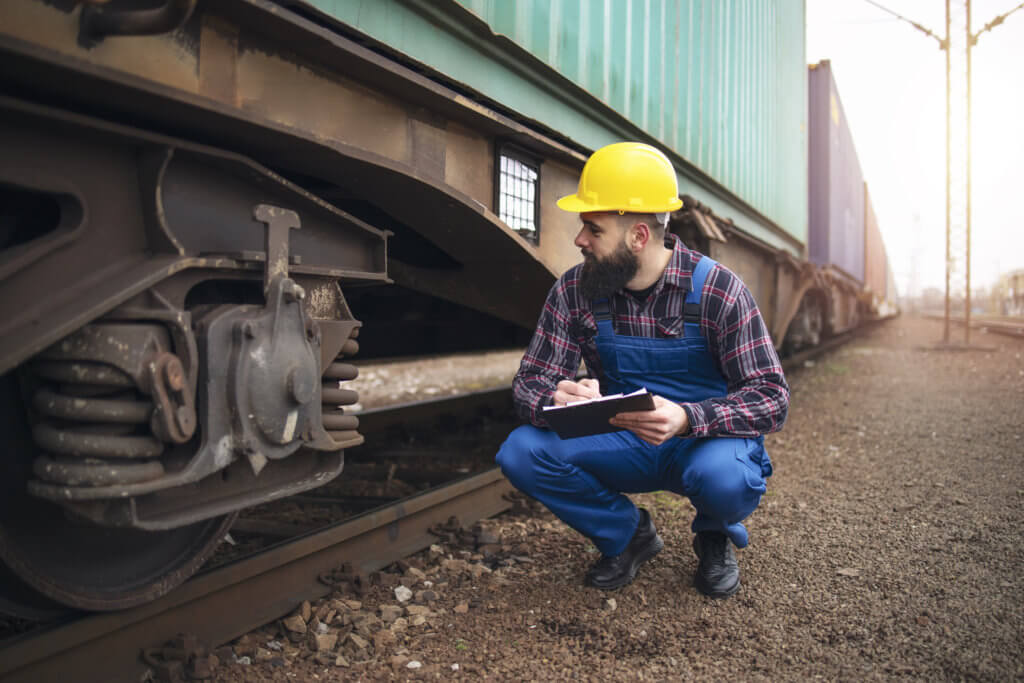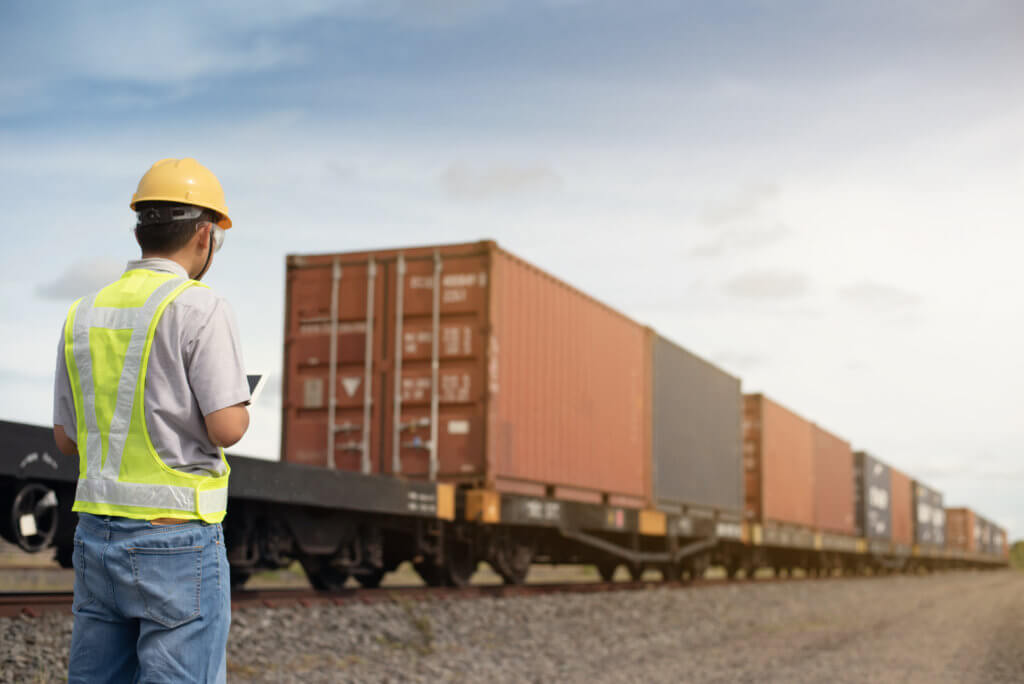This article first appeared on July 2nd, 2021 on Railway Age.
As it has with everything else in the world, COVID-19 has impacted railroading in a variety of ways—and staffing is one of them. Here are five takeaways from this past year, around what to expect and potential ways to alleviate the impact of each.
1. Staffing Efficiencies Closely Tied to Safety and Resiliency
Prior to Covid, railroads sought to shed assets and reduce workforce size to increase shareholder return and decrease operating ratios. Precision Scheduled Railroading (PSR)’s aggressive approach to staff reduction often focused on groups or crafts with limited innovation.
Staffing efficiencies quickly became more than a cost initiative, as staffing ties directly into safety. And in light of COVID, safety has expanded to include a focus on resiliency, as a tighter headcount requires a more proactive approach to keep trains running on schedule.
For example, eliminating inefficient train miles by eliminating stops, closing terminals and other actions has helped reduce headcount significantly, but this means our lean, mean train and engine workforce team are more valuable than ever. And also more susceptible to risk than ever.
With at least two workers (conductor and engineer) occupying the same space (locomotive cab) for 8 to 12 hours, and oftentimes with a different person every day, one trip with an infected co-worker can lead to the rapid erosion of workforce availability, delaying trains and terminal operations significantly. As railroads move to increasingly autonomous operations, requiring fewer personnel onboard, having in-depth and interactive training materials on-hand at all times – both for review and practice – will be critical. Workers will require more than a basic understanding of adjacent crafts, and that expertise should be immediately accessible for reference regardless. With safety as the industry’s top priority, it just makes sense.
2. Adopting Digitization to Keep Workers Safe and Evolve
Railroads must quickly get up to speed with available technologies – and they need to stay ahead of the curve moving forward. Adding to the potential for infection, the same train crews detailed above often have to report to a physical building with others to get required paperwork, and instructions from operational personnel to complete their duties.
At its worst, each crew member gets a paper copy (often several pages) of the train consist and other instructions. Technology allows operations to push this information to each member electronically, eliminating the need to physically “report” to a building. This greatly decreases chances for infection.
Also, many railroad terminals have several structures that exist for this purpose alone – to house operations that could be managed remotely. Digitizing these processes eliminates maintenance costs and frees real estate for other purposes.
“Our training requirements could not be sustained due to COVID restrictions,” says Michael Urena, Manager, Transportation Training, Training and Development, CN. “We had to look at our methodology of rules instruction in a different way, so that we could continue to provide our employees with the training they need to operate and work safely. By digitizing our training programs through remote learning, we were able to fulfill our training requirements and provide our employees with safety instruction they need.”
3. Emerging Sustainability Expectations
As the call for sustainability grows, impacts will be assessed by every industry. We know railroads are the most environmentally friendly transportation solution, as they reduce emissions by taking trucks off of highways. But, as mentioned, when detailing how to lessen the spread of disease with technology—sustainability efforts would benefit as well.
When it comes to the paper trail that railroads create, they’re lagging far behind other industries. It’s at least a 50 page per trip process to get from point A to point B, and that is entirely unacceptable.
Digitization needs to happen very soon, and on a large scale or railroads will find themselves up against hard deadlines that leave them few choices to consider.
4. Hiring and Furloughing Practices Require Rethinking
Historically, railroads have carried headcount that can be quickly shed on a seasonal basis to correspond with traffic declines, offering steady employment nine months out of the year. Workers often embraced this as regular business and saved money for the time away, knowing that once volume increased, they’d be called back to work in most cases.
With the financial collapse of 2008 and a change in generations, rail workers stopped relying on the work and returned in smaller numbers. They craved stability, and they realized they have options. This change resulted in a hiring process that has become wasteful and unsustainable. Those hired know they will be furloughed, and many of them won’t return. This results in a hiring and training of new personnel with every shift in volume and traffic. Beyond not being sustainable, it’s not the best for safety either. Creating a workforce with longevity should be the goal. And creating ways to keep them engaged and always learning is the conduit for this commitment.
Dan Bostek, Director of Operations Practices and Special Projects at Norfolk Southern, says, “The use of remote simulation monitoring and training was a novel idea to many in the rail industry in 2020. However, the need for social distancing as a result of COVID-19 necessitated the expanded use of remote simulation monitoring and training. This accelerated acceptance and proved the value of this technology.”
When workers are continuously learning and increasing their value in their craft as an industry expert, they both appreciate their work and feel appreciated by the railroad. And by practicing challenging or emergency scenarios regularly, overall safety and productivity correspondingly increase. As Bostek mentions above, digital, virtual simulations can make this practice possible anytime, anywhere and at a pace that meets each worker where they are.
5. Eliminating Assets Requires Precision Maintenance
And connecting back to the first item, precision scheduling also means railroads are left with precision maintenance. This isn’t a bad thing, but it’s a necessary consideration. PSR touts itself on reducing assets such as track, cars and locomotives, but little is discussed about maintaining the assets that remain.
The railroads’ focus on safety has resulted in one the safest industries in the transportation sector, and now they must apply this same vigor to maintenance training and processes, because there is no excess to get it wrong. Rail workers are in an environment where troubles and delays are often brand new, as they’ve probably forgotten how to do key maintenance tasks due to lack of practice.
Having an immediately accessible and mobile approach to these maintenance tasks for refresher trainers at set intervals will be crucial. The generational knowledge that was passed down previously is fast-disappearing, and workers will not have that same 1:1 contact with “old hands” regardless, so having institutional knowledge stored and readily available in digital format is the way of the future.
As freight volume picks up in the second half of 2021 and beyond, concerns about meeting demand are rising, and training new or re-hires in a timely, efficient and safe manner will be critical.
View our Catalog of Rail Training Solutions available for your team to deploy today.
This article first appeared on July 2nd, 2021 on Railway Age.




